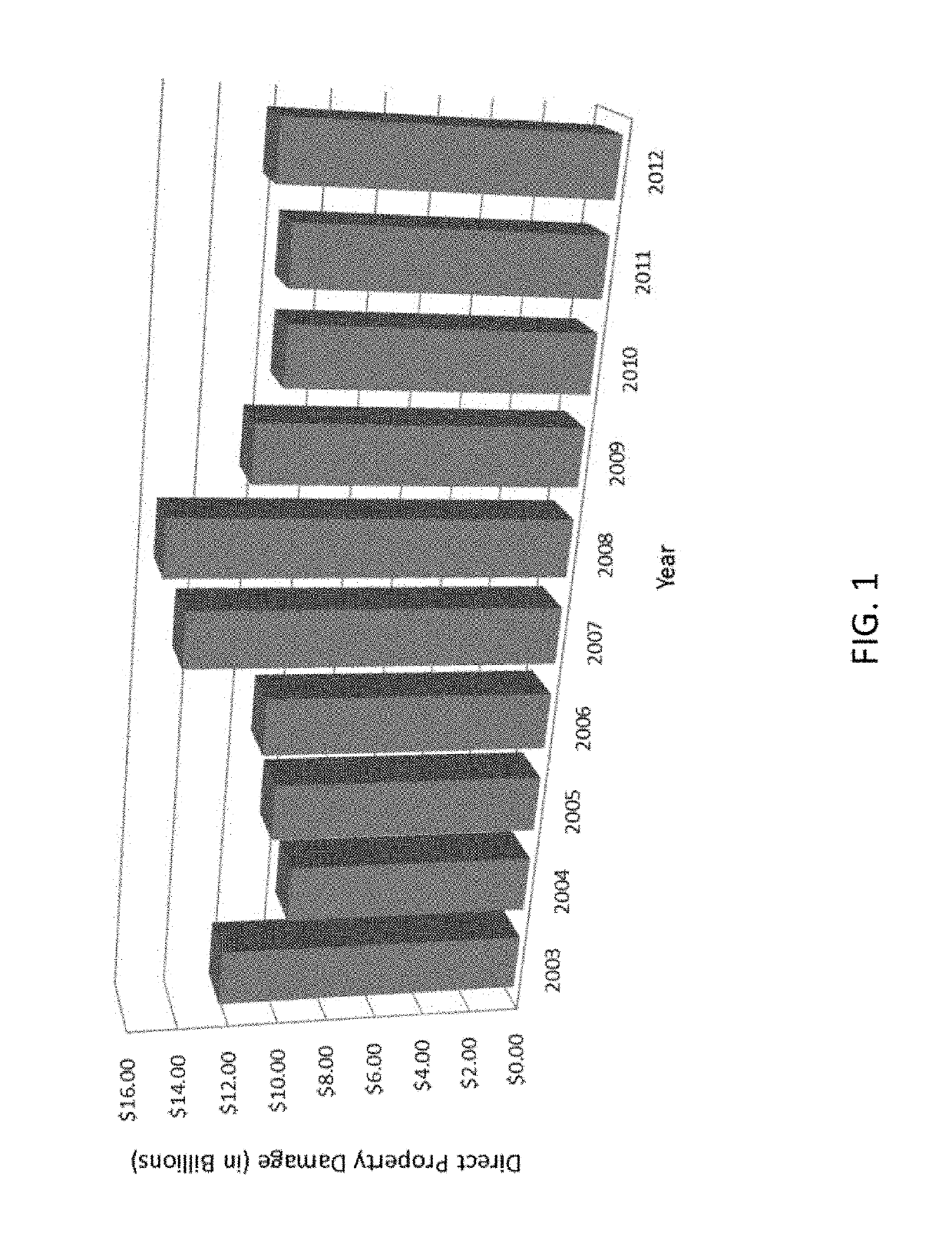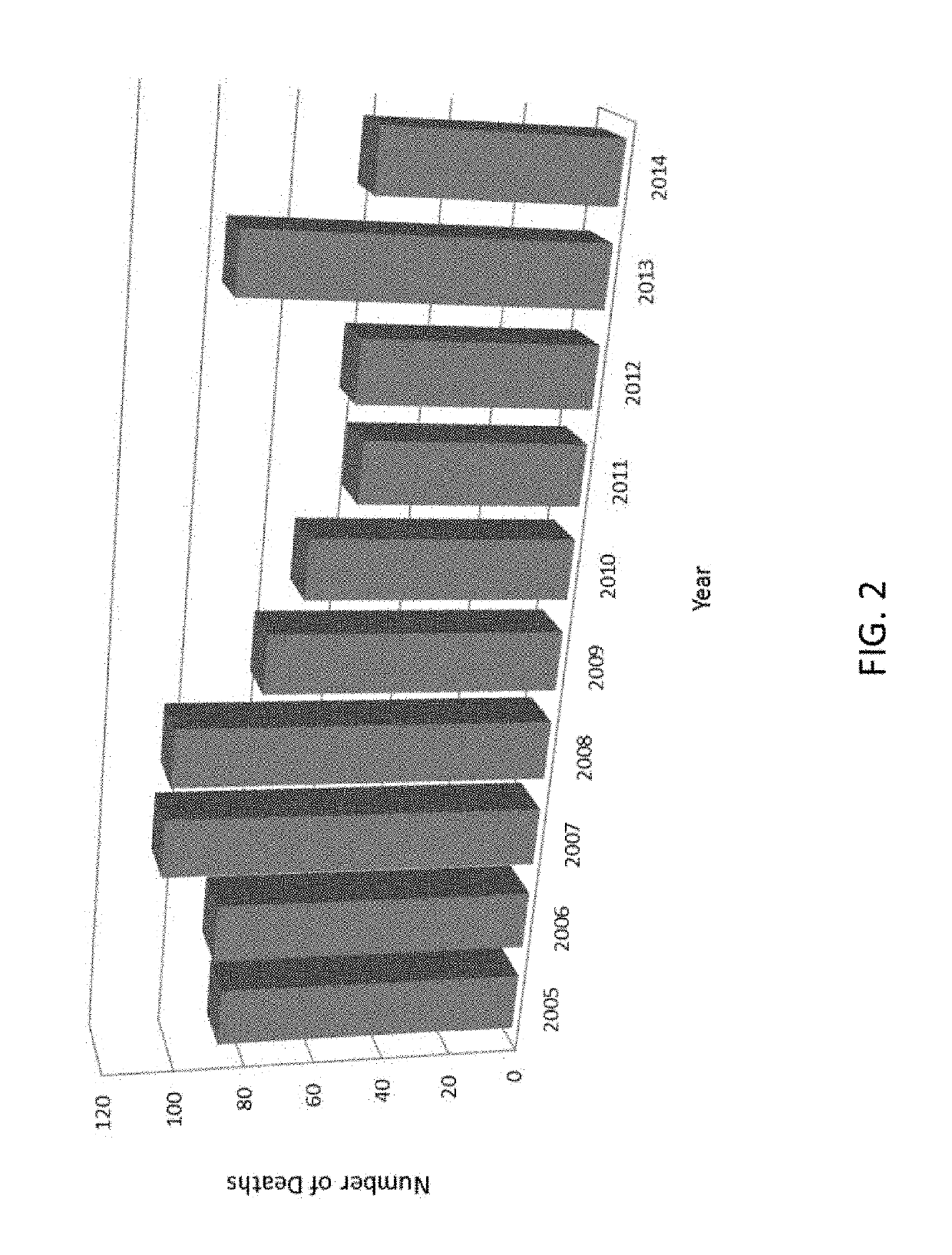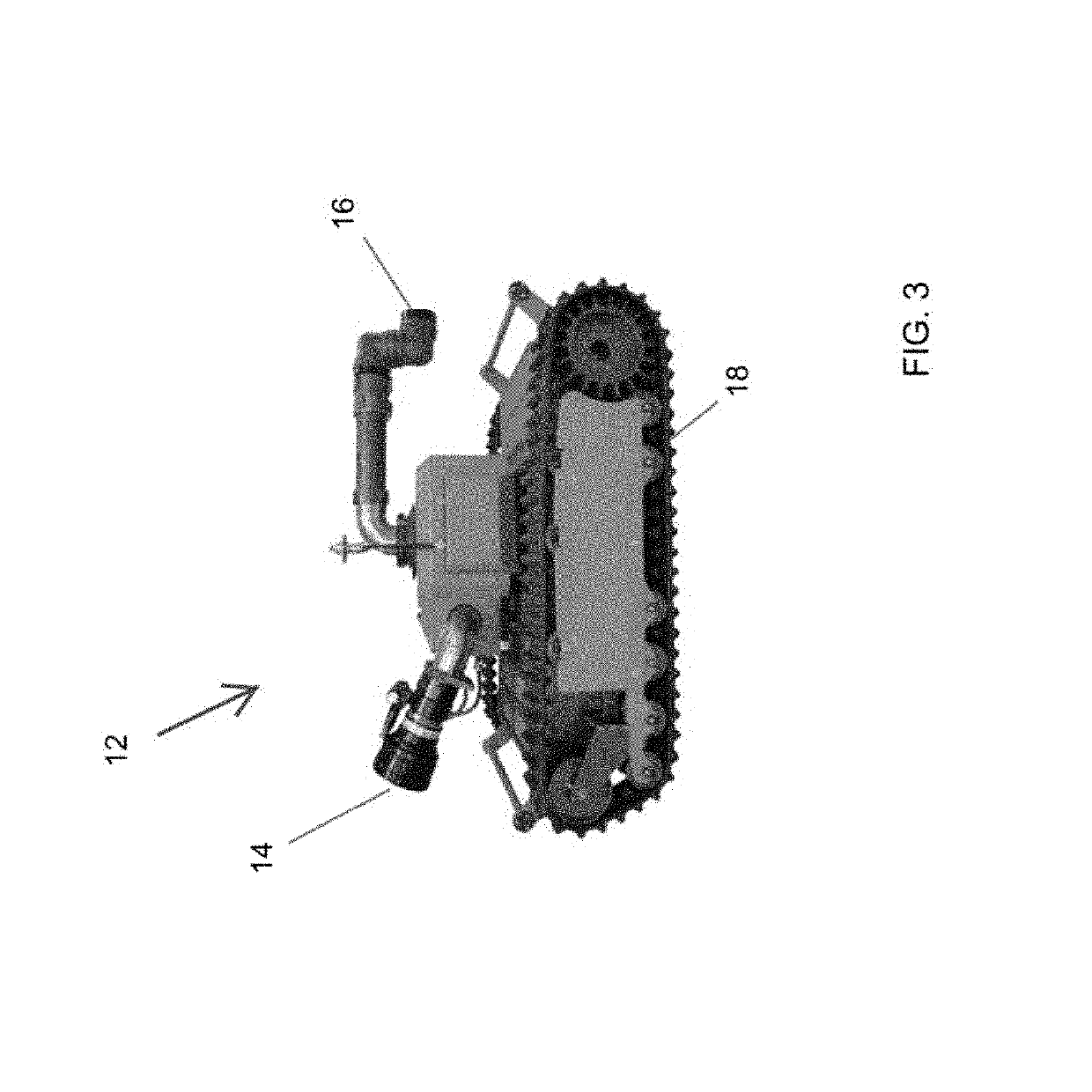Systems and methods for improving efficiency of firefighting robots
a firefighting robot and robot technology, applied in the field of systems and methods for improving can solve the problems of increasing the risk of life-threatening situations for firefighters, reducing the efficiency of firefighting robots, and potentially extinguishing fires faster, so as to improve the efficiency of firefighting robots, and increase the duration of operation
- Summary
- Abstract
- Description
- Claims
- Application Information
AI Technical Summary
Benefits of technology
Problems solved by technology
Method used
Image
Examples
case 1
[0036] Fire hose with water.
Fs=0.85×255 kg×9.8 m / s2=2124.15 N (3)
Fk=0.67×255 kg×9.8 m / s2=1674.33 N (4)
W (per one hour)=1674.33 N×4000 m=6697320 J=24V / 26.6 Ah (5)
case 2
[0037] Fire hose without water.
Fs=0.85×56 kg×9.8 m / s2=466.48 N (6)
Fk=0.67×56 kg×9.8 m / s2=367.696 N (7)
W (per one hour)=367.696 N×4000 m=1470784 J (8)
6697320 J: 1470784 J=24V / 26.6 Ah: X (9)
X=24V / 5.841 Ah (10)
wherein X is work done in one hour without water in the hose.
[0038]Thus, assuming that the system completely drains the water from the hose, the robot 12 would use just 24V / 5.841 Ah power and thereby economize the power demand by up to about 78%. This means the robot 12 can constantly move up to 6.84 hours with an empty fire hose. This comparison is further shown in Table 3 below. Due to the longer operating time, the firefighting robot 12 may not need to be replaced with another robot or have its battery recharged during the fire, as may otherwise be the case.
[0039]
TABLE 3Power demand and operating time of the firefighting robotExtinguishingManeuvermodeWith waterWithout waterPower demand24 V / 5 Ah24 V / 26.6 Ah24 V / 5.841 AhOperating time8 hours1.5 hours6.84 hours
[0040]Total Pr...
PUM
 Login to View More
Login to View More Abstract
Description
Claims
Application Information
 Login to View More
Login to View More - R&D
- Intellectual Property
- Life Sciences
- Materials
- Tech Scout
- Unparalleled Data Quality
- Higher Quality Content
- 60% Fewer Hallucinations
Browse by: Latest US Patents, China's latest patents, Technical Efficacy Thesaurus, Application Domain, Technology Topic, Popular Technical Reports.
© 2025 PatSnap. All rights reserved.Legal|Privacy policy|Modern Slavery Act Transparency Statement|Sitemap|About US| Contact US: help@patsnap.com



